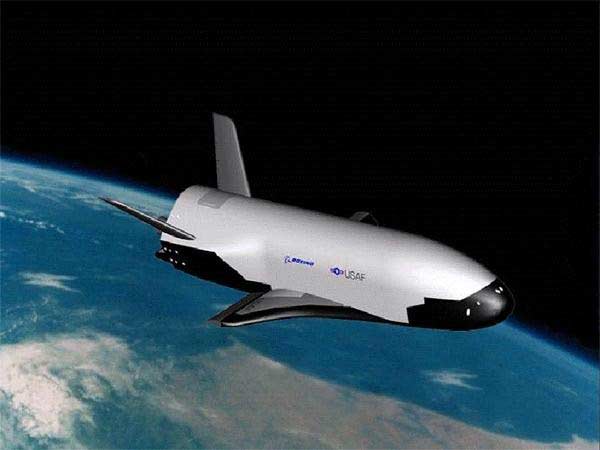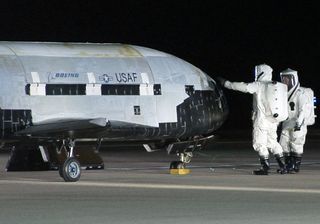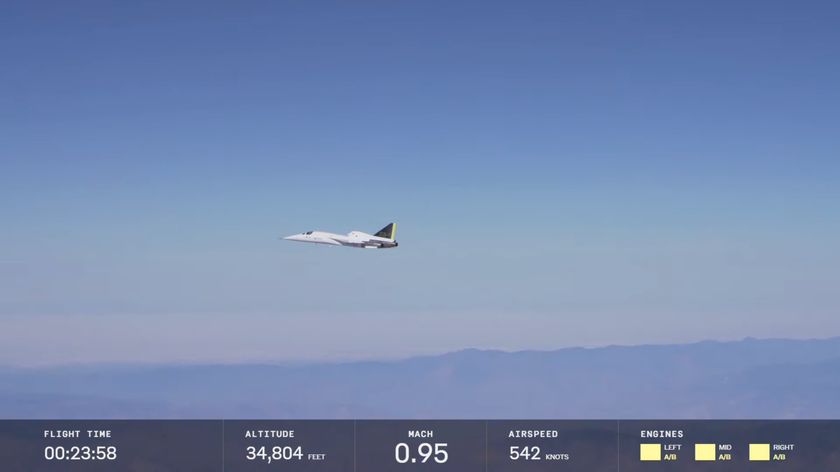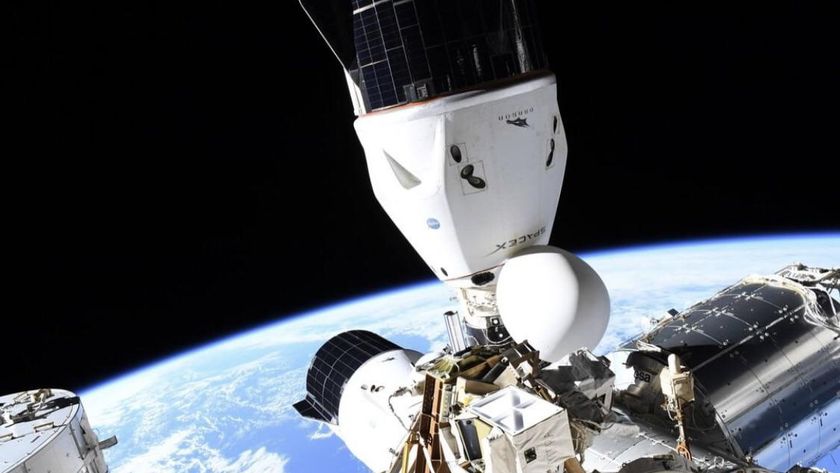
Air Force's Secretive X-37B Space Plane Will Land Soon

After more than a year in space, the U.S. Air Force's secretive robotic space plane, the X-37B, is coming down soon.
That's the word today (May 30) from officials at Vandenberg Air Force Base in California, the site where the reusable miniature space shuttle will land in the next few weeks, technical and weather conditions permitting.
While the exact landing date and time of the unmanned X-37B space plane is not yet determined, according to a Vandenberg Air Force Base statement, the craft’s touchdown "is expected to occur during the early- to mid-June timeframe."
Preparations for the second landing of the X-37B are now underway at the Air Force base. "The men and women of Team Vandenberg are ready to execute safe landing operations anytime and at a moment’s notice," said Col. Nina Armagno, 30th Space Wing commander.
Vandenberg is considered the mostly likely primary landing site for X-37B. Edwards Air Force Base, also in California, serves as a backup landing strip.
The Air Force's 30th Space Wing will monitor the re-entry and self-guided landing of the second X-37B Orbital Test Vehicle mission, called OTV-2. [Photos: The X-37B Space Plane's Second Mission]
This second flight of the winged X-37B space plane design began with a launch on March 5, 2011. It was lofted into Earth orbit by an Atlas 5 booster from Cape Canaveral Air Force Station in Florida.
Get the Space.com Newsletter
Breaking space news, the latest updates on rocket launches, skywatching events and more!
Classified payload
The space plane now circling Earth is the second spacecraft of its kind built for the Air Force by Boeing’s Phantom Works. What payload the X-37B is carrying is classified, and the mission is being carried out by the Air Force Rapid Capabilities Office.
Each X-37B space plane is about 29 feet (8.8 meters) long and 15 feet (4.5 m) wide. The vehicle has a payload bay about the size of a pickup truck bed and is outfitted with a deployable solar panel to generate power.
In an earlier email message, U.S. Air Force Maj. Tracy Bunko, the Pentagon's spokesperson for the X-37B project, told SPACE.com that a third flight of an X-37B spacecraft — slated for liftoff this fall — will use the same craft that flew the first test flight, the OTV-1 mission, in 2010.
The first voyage of the X-37B space plane launched into orbit on April 22, 2010, and lasted 225 days. That craft landed on Dec. 3, zooming in on autopilot over the Pacific Ocean and gliding down onto a specially prepared runway at Vandenberg.

X-37B's huge success
According to General William Shelton, commander of Air Force Space Command, the current mission of high-flying X-37B space plane has been a huge success.
Speaking April 17 at the 28th National Space Symposium in Colorado Springs, Colo., Shelton said: "Although I can’t talk about mission specifics, suffice it to say this mission has been a spectacular success."
Shelton praised the long-duration mission of the craft, which far surpasses its 270-day baseline design specifications.
According to an Air Force fact sheet on the vehicle: "The X-37B Orbital Test Vehicle, or OTV, is a non-operational system that will demonstrate a reliable, reusable, unmanned space test platform for the U.S. Air Force. The objectives of the OTV program include space experimentation, risk reduction and a concept of operations development for reusable space vehicle technologies."
Leonard David has been reporting on the space industry for more than five decades. He is a winner of last year's National Space Club Press Award and a past editor-in-chief of the National Space Society's Ad Astra and Space World magazines. He has written for SPACE.com since 1999.
Join our Space Forums to keep talking space on the latest missions, night sky and more! And if you have a news tip, correction or comment, let us know at: community@space.com.

Leonard David is an award-winning space journalist who has been reporting on space activities for more than 50 years. Currently writing as Space.com's Space Insider Columnist among his other projects, Leonard has authored numerous books on space exploration, Mars missions and more, with his latest being "Moon Rush: The New Space Race" published in 2019 by National Geographic. He also wrote "Mars: Our Future on the Red Planet" released in 2016 by National Geographic. Leonard has served as a correspondent for SpaceNews, Scientific American and Aerospace America for the AIAA. He has received many awards, including the first Ordway Award for Sustained Excellence in Spaceflight History in 2015 at the AAS Wernher von Braun Memorial Symposium. You can find out Leonard's latest project at his website and on Twitter.


